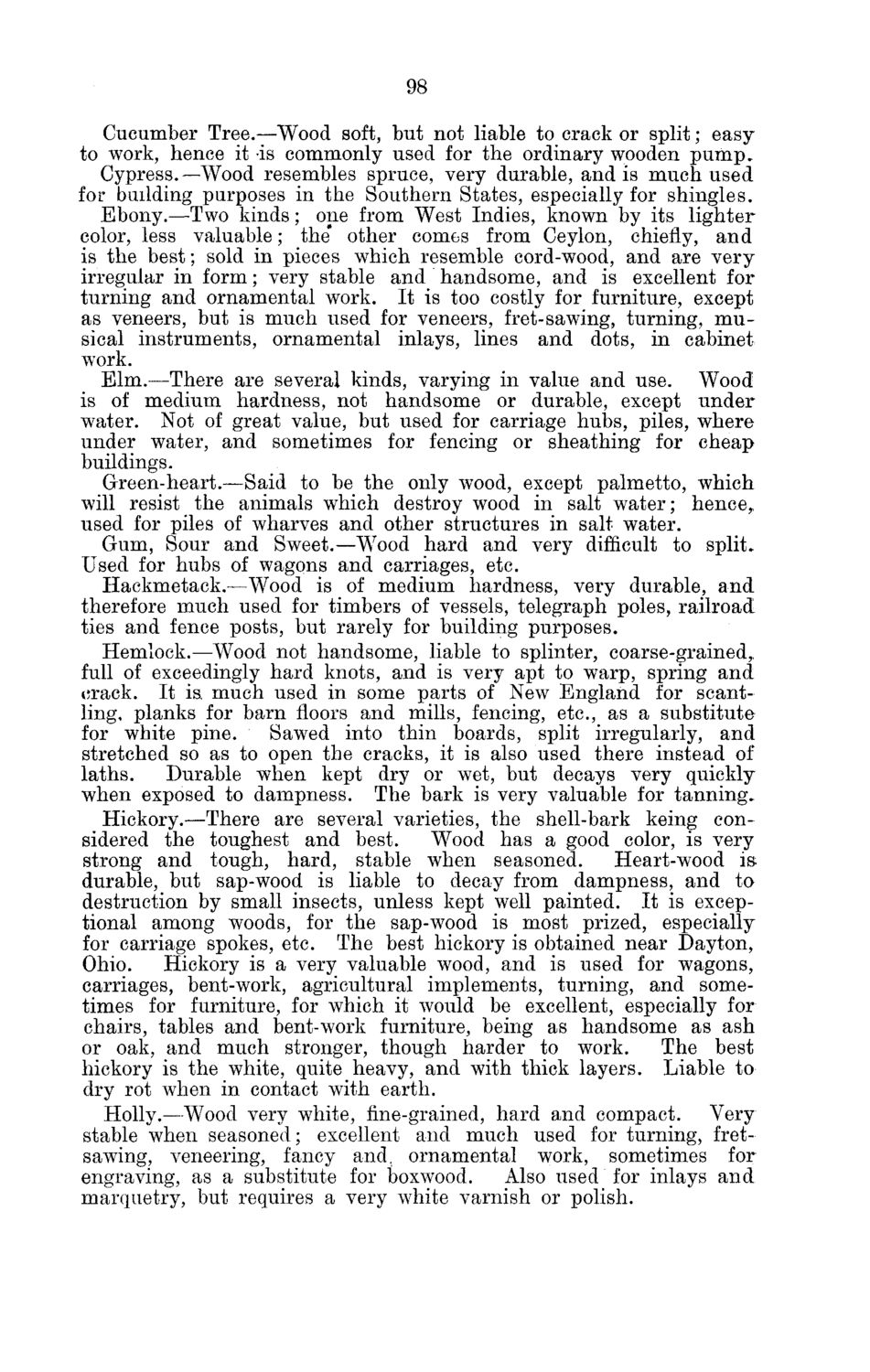| |
| |
Caption: Board of Trustees Minutes - 1880
This is a reduced-resolution page image for fast online browsing.

EXTRACTED TEXT FROM PAGE:
98 Cucumber Tree.—Wood soft, but not liable to crack or split; easy to work, hence it is commonly used for the ordinary wooden pump. Cypress.—Wood resembles spruce, very durable, and is much used for building purposes in the Southern States, especially for shingles. Ebony.—Two kinds; one from West Indies, known by its lighter color, less valuable; the* other comes from Ceylon, chiefly, and is the best; sold in pieces which resemble cord-wood, and are very irregular in form; very stable and handsome, and is excellent for turning and ornamental work. It is too costly for furniture, except as veneers, but is much used for veneers, fret-sawing, turning, musical instruments, ornamental inlays, lines and dots, in cabinet work. Elm.—There are several kinds, varying in value and use. Wood is of medium hardness, not handsome or durable, except under water. Not of great value, but used for carriage hubs, piles, where under water, and sometimes for fencing or sheathing for cheap buildings. Green-heart.—Said to be the only wTood, except palmetto, which will resist the animals which destroy wood in salt water; hence, used for piles of wharves and other structures in salt water. Gum, Sour and Sweet.—Wood hard and very difficult to split. Used for hubs of wagons and carriages, etc. Hackmetack.—Wood is of medium hardness, very durable, and therefore much used for timbers of vessels, telegraph poles, railroad ties and fence posts, but rarely for building purposes. Hemlock.—Wood not handsome, liable to splinter, coarse-grained,, full of exceedingly hard knots, and is very apt to warp, spring and crack. It is. much used in some parts of New England for scantling, planks for barn floors and mills, fencing, etc., as a substitute for white pine. Sawed into thin boards, split irregularly, and stretched so as to open the cracks, it is also used there instead of laths. Durable when kept dry or wet, but decays very quickly when exposed to dampness. The bark is very valuable for tanning. Hickory.—There are several varieties, the shell-bark keing considered the toughest and best. Wood has a good color, is very strong and tough, hard, stable when seasoned. Heart-wood is durable, but sap-wood is liable to decay from dampness, and to destruction by small insects, unless kept well painted. It is exceptional among woods, for the sap-wood is most prized, especially for carriage spokes, etc. The best hickory is obtained near Dayton, Ohio. Hickory is a very valuable wood, and is used for wagons, carriages, bent-work, agricultural implements, turning, and sometimes for furniture, for which it would be excellent, especially for chairs, tables and bent-work furniture, being as handsome as ash or oak, and much stronger, though harder to work. The best hickory is the white, quite heavy, and with thick layers. Liable to dry rot when in contact with earth. Holly.—Wood very white, fine-grained, hard and compact. Very stable when seasoned; excellent and much used for turning, fretsawing, veneering, fancy and. ornamental work, sometimes for engraving, as a substitute for boxwood. Also used for inlays and marquetry, but requires a very white varnish or polish.
| |